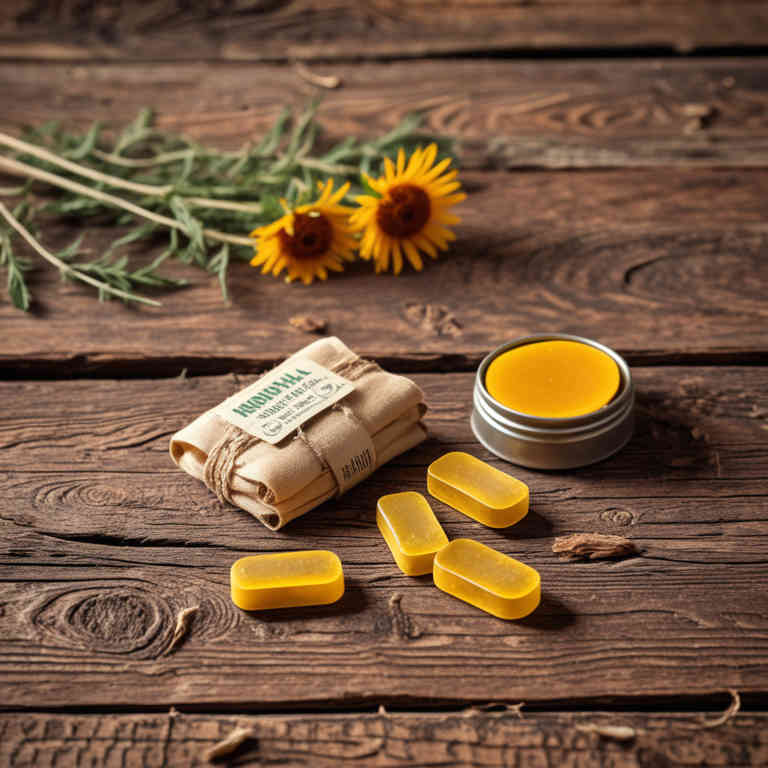Arnica montana lozenge for medicinal use

Arnica montana lozenge is a herbal preparation made from the dried flowers of the Arnica montana plant, commonly used in herbal medicine.
It is typically formulated as a lozenge to facilitate slow absorption through the mucous membranes of the mouth. In herbalism, it is used to alleviate pain, reduce inflammation, and promote healing, particularly for conditions affecting the mouth and throat. The active compounds in Arnica montana, such as sesquiterpene lactones, are believed to contribute to its therapeutic effects.
It is often recommended for sore throats, gum inflammation, and as a supportive treatment for dental issues.
Uses
Arnica montana lozenge has been used to alleviate pain and inflammation, particularly in the mouth and throat, for centuries.
Historically, it was utilized in traditional European medicine to treat ailments such as sore throats, toothaches, and gum inflammation. The plant's active compounds, including sesquiterpene lactones, are believed to have anti-inflammatory and analgesic properties. In modern times, it is commonly used as a natural remedy for minor oral discomfort and is often found in over-the-counter lozenges.
However, it should be used with caution, as it may cause skin irritation or allergic reactions in some individuals.
Benefits
Arnica montana lozenge has health benefits such as reducing inflammation and pain, particularly in the mouth and throat.
It is commonly used to alleviate symptoms of sore throats, gum inflammation, and mouth ulcers due to its anti-inflammatory and antimicrobial properties. The active compounds in Arnica montana, such as helenalin and other sesquiterpene lactones, contribute to its therapeutic effects. This preparation may also support healing of minor wounds and reduce swelling in the oral cavity.
However, it should be used with caution and under professional guidance, as it may cause allergic reactions in some individuals.
Constituents
Arnica montana lozenge active constituents include sesquiterpene lactones, flavonoids, and caffeic acid derivatives.
These compounds are believed to possess anti-inflammatory, analgesic, and antiseptic properties. The sesquiterpene lactones, such as helenalin, are primarily responsible for the herb's anti-inflammatory effects. Flavonoids contribute to its antioxidant activity, helping to neutralize free radicals in the body.
Caffeic acid derivatives may support tissue repair and reduce swelling, making this preparation useful for addressing minor injuries and inflammation.
Preparation
To make Arnica montana lozenge, first gather dried Arnica montana flowers and a sugar base, such as powdered sugar or a sugar substitute.
Next, grind the dried flowers into a fine powder using a mortar and pestle or a spice grinder. Then, mix the powdered Arnica with the sugar in a bowl, ensuring an even distribution. Shape the mixture into small lozenges using a mold or by rolling them between your hands.
Finally, allow the lozenges to dry completely in a cool, dark place before storing them in an airtight container.
Side Effects
Arnica montana lozenge may lead to gastrointestinal upset, including nausea, vomiting, and diarrhea, especially if taken in high doses or for prolonged periods.
It can also cause allergic reactions such as skin rashes, itching, or more severe symptoms like anaphylaxis in sensitive individuals. Long-term use may result in liver damage, as arnica contains compounds that are potentially toxic to the liver. It is contraindicated for use during pregnancy or while breastfeeding due to the risk of harm to the fetus or infant.
Always consult a healthcare professional before using arnica montana lozenge, especially if you have pre-existing health conditions or are taking other medications.